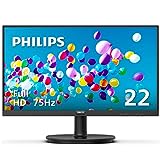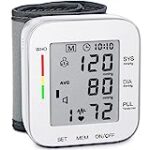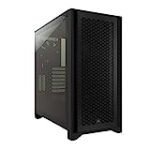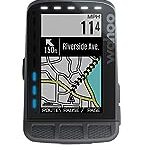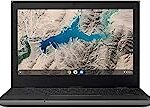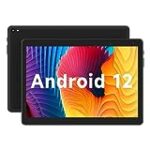🌅 Introduction
Welcome to our comprehensive computer monitors buying guide! Whether you’re a gamer, a graphic designer, or simply someone who spends hours in front of a screen, finding the perfect monitor is crucial for an immersive and visually stunning experience. With an overwhelming array of options available, we understand that choosing the right monitor can be a daunting task. Fear not, as we are here to simplify the process for you. From **ultra-high definition** displays to **curved screens** and **refresh rates**, we will walk you through the essential factors to consider before making your purchase. Let’s dive in and find the monitor that will elevate your computing experience to new heights!
🏆 Our Top 5
- CRISP CLARITY: This 22 inch class (21.5″ viewable) Philips V line monitor delivers crisp Full HD 1920x1080 visuals. Enjoy movies, shows and videos with remarkable detail
- 100HZ FAST REFRESH RATE: 100Hz brings your favorite movies and video games to life. Stream, binge, and play effortlessly
- SMOOTH ACTION WITH ADAPTIVE-SYNC: Adaptive-Sync technology ensures fluid action sequences and rapid response time. Every frame will be rendered smoothly with crystal clarity and without stutter
- INCREDIBLE CONTRAST: The VA panel produces brighter whites and deeper blacks. You get true-to-life images and more gradients with 16.7 million colors
- THE PERFECT VIEW: The 178/178 degree extra wide viewing angle prevents the shifting of colors when viewed from an offset angle, so you always get consistent colors
- 99% sRGB: With 99% sRGB, this monitor offers a wider color gamut than most conventional monitors, giving deeper colors and defining features.
- Multiple Ports: Two HDMI ports and one VGA port provide up to 75HZ refresh rate, refining picture clarity in all action-packed gaming sequences and graphic design projects. Audio In and a Headphone Jack provide diverse audio options.
- Built in Speakers: Perfectly suited to work & gaming settings, built-in speakers deliver robust & smooth audio while saving space on your desk.
- Blue Light Shift: Blue Light Shift reduces blue light, allowing you to comfortably work, watch, or play applications without straining your eyes.
- FPS-RTS Game Modes: FPS and RTS are Sceptre's custom set display settings built for an enhanced gaming experience. FPS (First Person Shooter), RTS (Real-Time Strategy)
- 27" Full HD IPS (1920 x 1080) Monitor For Home, Gaming or Office
- AMD FreeSync Technology
- Response Time: 1ms VRB | Refresh Rate: 100Hz (Using HDMI Port) | Brightness: 250 nits | Pixel Pitch: 0.311mm
- Ergonomic Tilt: -5° to 15° | VESA Mounting Compliant (100 x 100mm)
- Ports: 1 x HDMI 1.4 Port & 1 x VGA Port (HDMI Cable Included)
- 27" Full HD (1920 x 1080) Ultra-Thin IPS Monitor For Home, Gaming or Office
- AMD FreeSync Technology
- Response Time: 1ms VRB | Refresh Rate: 100Hz (Using HDMI Port) | Brightness: 250 nits | Pixel Pitch: 0.311mm
- Ergonomic Tilt: -5° to 15° | VESA Mounting Compliant (75 x 75mm)
- Ports: 1 x HDMI 1.4 Port & 1 x VGA Port (HDMI Cable Included)
- Built-in Speakers Perfectly suited to work & gaming settings, built-in speakers deliver robust & smooth audio while saving space on your desk.
- Fast Response Time Fast response times reduce ghosting & blurring while transitioning pixels, always keeping the enemy & terrain precisely in focus during chaotic moments.
- 【TRUE TO LIFE COLORS】Experience vibrant and true-to-life colors with a 100% sRGB color gamut performance, ensuring accurate and stunning visuals for all your creative and multimedia tasks.
- 【ENHANCED GAMING EXPERIENCE】 Elevate your gaming prowess with a lightning-fast 1ms BR (Blur Reduction) and a silky-smooth refresh rate. Enjoy unparalleled responsiveness and seamless visuals that will take your gaming experience to the next level.
- 【CUSTOM GAMING MODES】Experience enriched gaming with Sceptre's custom display settings tailored for gamers. Dive into the heart-pounding action of First Person Shooters (FPS) or master the strategic gameplay of Real-Time Strategy (RTS) titles, all optimized for peak performance on our monitor.
🤔 How to choose?
1. Resolution: Finding the Perfect Pixel Count
When it comes to choosing a computer monitor, one of the most important factors to consider is the resolution. The resolution determines the number of pixels displayed on the screen, which directly impacts the clarity and sharpness of the images and text.
**Why is resolution important?** A higher resolution means more pixels, resulting in a crisper and more detailed display. This is particularly important for tasks that require precise visuals, such as graphic design or video editing. On the other hand, if you primarily use your computer for web browsing or word processing, a lower resolution may suffice.
**What are the common resolutions?** The most common resolutions for computer monitors are Full HD (1920×1080 pixels), Quad HD (2560×1440 pixels), and Ultra HD or 4K (3840×2160 pixels). Each resolution offers a different level of detail, so it’s essential to choose one that suits your needs and budget.
2. Size Matters: Finding the Right Fit
The size of a computer monitor is another crucial factor to consider. The size not only affects the overall viewing experience but also determines the amount of desk space required.
**What size is ideal?** The ideal monitor size depends on your personal preferences and usage. If you primarily use your computer for work or productivity tasks, a 24-inch monitor may be sufficient. However, if you enjoy gaming or watching movies, a larger screen, such as a 27-inch or even a 32-inch monitor, can provide a more immersive experience.
**Consider your desk space:** It’s important to consider the available desk space before choosing a monitor size. A larger monitor may require a bigger desk or even a monitor arm to ensure comfortable viewing. Measure your desk and consider the layout of your workspace to determine the maximum size that will fit comfortably.
3. Panel Type: Choosing the Right Technology
The panel type of a monitor determines the quality of the display and the viewing angles. There are three main types of panels: Twisted Nematic (TN), In-Plane Switching (IPS), and Vertical Alignment (VA).
**TN panels:** TN panels are known for their fast response times, making them ideal for gaming or fast-paced tasks. However, they often have narrower viewing angles and less accurate color reproduction compared to IPS or VA panels.
**IPS panels:** IPS panels offer wider viewing angles and more accurate color reproduction, making them suitable for tasks that require color accuracy, such as photo editing or graphic design. They also provide better overall image quality and better visibility in bright environments.
**VA panels:** VA panels offer high contrast ratios and deep blacks, making them ideal for watching movies or working with dark visuals. However, they may have slower response times compared to TN or IPS panels.
4. Refresh Rate: Smooth and Fluid Motion
The refresh rate of a monitor refers to the number of times the screen updates per second. A higher refresh rate results in smoother and more fluid motion, which is particularly important for gaming or watching videos.
**Standard refresh rate:** Most monitors have a standard refresh rate of 60Hz, which is sufficient for everyday tasks. However, if you’re a gamer or require a more responsive display, consider a monitor with a higher refresh rate, such as 144Hz or even 240Hz.
**Adaptive Sync technology:** Some monitors also feature Adaptive Sync technology, such as AMD FreeSync or NVIDIA G-Sync, which synchronizes the monitor’s refresh rate with the graphics card’s output. This eliminates screen tearing and provides a smoother gaming experience.
5. Connectivity: Connecting Your Devices
The connectivity options of a monitor determine how you can connect it to your computer and other devices. It’s important to consider the available ports and compatibility with your devices.
**Common connectivity options:** The most common connectivity options for monitors include HDMI, DisplayPort, and DVI. HDMI is widely used and supports both video and audio signals, making it suitable for connecting to gaming consoles or media players. DisplayPort offers higher bandwidth and is commonly used for high-resolution displays or multi-monitor setups. DVI is an older standard but is still found on some monitors and graphics cards.
**Consider your devices:** Before choosing a monitor, consider the devices you plan to connect to it. Ensure that the monitor has the necessary ports to connect your computer, gaming console, or any other devices you use regularly.
By considering these factors – resolution, size, panel type, refresh rate, and connectivity – you can make an informed decision when choosing a computer monitor that suits your needs and enhances your overall computing experience. Remember to prioritize your specific requirements and budget to find the perfect monitor for you.
💡 What to Look for in a computer monitors?
1. Display Quality
When it comes to computer monitors, display quality is of utmost importance. After all, you’ll be staring at the screen for hours on end, whether you’re working, gaming, or watching movies. The two key factors to consider in display quality are resolution and refresh rate.
**Resolution:** The resolution determines the number of pixels on the screen, which directly affects the clarity and sharpness of the images. A higher resolution means more pixels, resulting in a crisper display. The most common resolutions are Full HD (1920×1080), Quad HD (2560×1440), and Ultra HD or 4K (3840×2160). If you’re a content creator or a professional who requires precise details, a higher resolution monitor would be ideal.
**Refresh Rate:** The refresh rate refers to the number of times the screen refreshes per second. A higher refresh rate, typically measured in Hertz (Hz), results in smoother motion and reduces motion blur. For gamers and those who enjoy fast-paced action, a monitor with a refresh rate of 144Hz or higher is recommended.
2. Panel Technology
The panel technology used in a monitor greatly impacts the overall viewing experience. There are three main types of panel technologies available in the market:
**Twisted Nematic (TN):** TN panels offer fast response times, making them suitable for gaming. However, they have narrower viewing angles and poorer color reproduction compared to other panel types.
**In-Plane Switching (IPS):** IPS panels provide wider viewing angles and better color accuracy. They are ideal for tasks that require color precision, such as photo and video editing. However, they tend to have slower response times compared to TN panels.
**Vertical Alignment (VA):** VA panels strike a balance between TN and IPS panels. They offer better color reproduction than TN panels and faster response times than IPS panels. VA panels are suitable for both gaming and multimedia consumption.
3. Connectivity Options
Consider the connectivity options available on the monitor to ensure compatibility with your devices. The most common connectivity options include:
**HDMI:** HDMI ports are widely used and support both audio and video signals. They are essential for connecting gaming consoles, Blu-ray players, and streaming devices.
**DisplayPort:** DisplayPort is a versatile option that supports higher resolutions and refresh rates. It is commonly used for connecting high-end gaming PCs and professional workstations.
**USB-C:** USB-C ports provide power delivery, data transfer, and video output capabilities in a single cable. They are increasingly popular and offer convenience for laptops and mobile devices.
In conclusion, when purchasing a computer monitor, prioritize display quality, panel technology, and connectivity options. Consider your specific needs, whether it’s gaming, content creation, or multimedia consumption, to find the perfect monitor that enhances your overall computing experience.
🔍 How we picked?
1. Researching the Latest Technology
When it comes to buying a computer monitor, it’s essential to stay up-to-date with the latest technology. With advancements happening at a rapid pace, it’s easy to get overwhelmed by the numerous options available in the market. At our buying guide, we take pride in our extensive research to ensure that we provide you with the most relevant and cutting-edge information.
We delve into the latest trends and innovations, such as high-resolution displays, refresh rates, and panel types. By understanding the technology behind computer monitors, we can help you make an informed decision that suits your specific needs.
For example, we explore the benefits of **4K resolution** and how it enhances the visual experience, making images and videos appear more lifelike. We also discuss the advantages of **IPS panels** in terms of color accuracy and wide viewing angles. By providing you with this knowledge, we empower you to choose a monitor that aligns with your preferences and requirements.
2. Analyzing Customer Reviews
While researching the latest technology is crucial, we also recognize the importance of real-world experiences. That’s why we extensively analyze customer reviews to gain insights into the performance and reliability of different computer monitors.
By examining a wide range of reviews, we can identify common themes and recurring issues. This allows us to provide you with a comprehensive overview of each product’s strengths and weaknesses.
For instance, if multiple customers mention that a particular monitor has poor color accuracy, we highlight this as a potential drawback. On the other hand, if a monitor receives consistent praise for its ergonomic design, we emphasize this as a standout feature. By incorporating customer feedback into our buying guide, we ensure that you have a well-rounded understanding of each product.
3. Comparing Price and Value
We understand that budget is an important consideration for many buyers. That’s why we compare the price and value of different computer monitors to help you find the best deal.
We analyze the features and specifications of each monitor and evaluate whether the price is justified. This allows us to identify monitors that offer exceptional value for money.
For example, if a monitor offers a high refresh rate, excellent color accuracy, and a competitive price point, we highlight it as a great value option. On the other hand, if a monitor is priced significantly higher than its competitors without offering any significant advantages, we caution buyers to consider alternative options.
By considering both the price and value of each monitor, we ensure that our buying guide caters to a wide range of budgets and preferences.
💬 Frequently asked questions about computer monitors
1. What factors should I consider when buying a computer monitor?
When purchasing a computer monitor, there are several important factors to consider. Firstly, **screen size** plays a crucial role in determining your viewing experience. A larger screen provides a more immersive experience, but it may also require more desk space. Secondly, **resolution** is key to achieving sharp and detailed visuals. Higher resolutions, such as 4K or Ultra HD, offer stunning clarity, making them ideal for graphic designers or gamers. Additionally, **refresh rate** is an important consideration for gamers, as it determines how smoothly the monitor can display fast-moving images. Lastly, **connectivity options** should not be overlooked. Ensure that the monitor has the necessary ports to connect to your computer or other devices.
2. What is the difference between LCD and LED monitors?
LCD (Liquid Crystal Display) and LED (Light Emitting Diode) are two common types of monitors. LCD monitors use fluorescent lamps to illuminate the screen, while LED monitors use energy-efficient LED lights. LED monitors are generally considered superior due to their higher contrast ratios, wider color gamut, and lower power consumption. They also tend to be thinner and lighter, making them more aesthetically pleasing. However, LCD monitors can still offer excellent image quality at a more affordable price point.
3. Should I choose a curved or flat monitor?
The decision between a curved or flat monitor ultimately comes down to personal preference and the intended use of the monitor. Curved monitors provide a more immersive viewing experience by wrapping the screen around your field of vision. This can be particularly beneficial for gaming or watching movies. On the other hand, flat monitors are more practical for everyday tasks such as web browsing and word processing. It’s worth noting that curved monitors may have a slightly distorted image when viewed from certain angles, so consider your viewing position before making a decision.
4. Is it worth investing in a high refresh rate monitor?
If you’re a gamer or someone who frequently watches fast-paced content, investing in a high refresh rate monitor can greatly enhance your experience. A higher refresh rate, such as 144Hz or 240Hz, allows for smoother motion and reduces motion blur. This is especially noticeable in fast-paced games, where quick reactions are crucial. However, if you primarily use your computer for everyday tasks like web browsing and document editing, a standard 60Hz monitor should suffice.
5. Can I use a TV as a computer monitor?
While it is possible to use a TV as a computer monitor, there are some important considerations to keep in mind. TVs are designed for a different viewing distance than computer monitors, so using a large TV as a monitor may result in eye strain or discomfort. Additionally, TVs often have higher input lag compared to dedicated computer monitors, which can negatively impact gaming or other tasks that require quick response times. If you do decide to use a TV as a monitor, ensure that it has the necessary connectivity options and adjust the display settings for optimal performance.
Last update on 2024-07-25 / Affiliate links / Images from Amazon Product Advertising API
